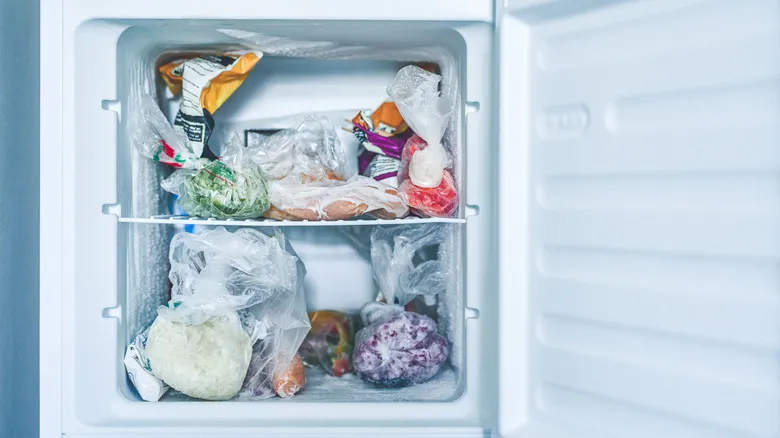Take inventory and toss out the old for the new
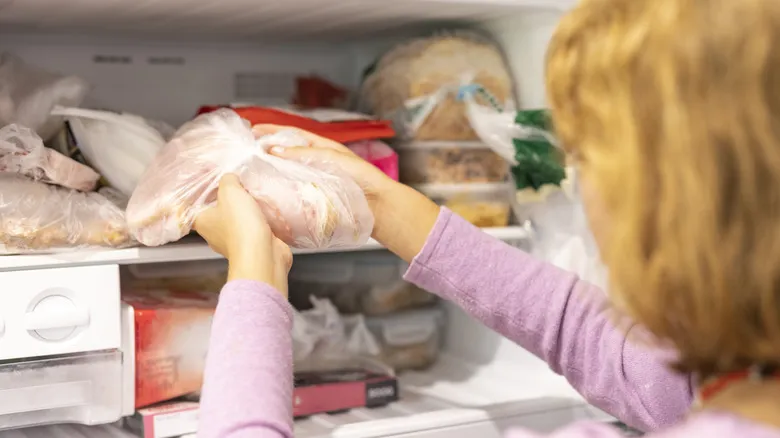
To optimize your freezer space, the initial step is to assess what you currently have and what needs to be discarded. Take everything out and place it on the counter. While most frozen foods can last for a long time, their texture and quality may start to deteriorate after a few months. The USDA provides a helpful chart detailing how long various frozen items maintain their best quality. Look for expiration dates and signs of freezer burn, which can be avoided with proper storage techniques. If an item has been in your freezer for a year, it's probably not something you'll use anytime soon, so consider clearing it out for food you'll actually consume.
The same applies to any unusual or unrecognizable frozen items. Maybe you took advantage of a sale on pig's feet or have a half-bag of old Brussels sprouts. If they no longer appeal to you, it's best to discard them. That unlabeled container filled with mystery leftovers from a party? It’s time to let it go. If you’re following a specific diet, be sure to throw away or donate any items that don’t align with your eating plan.
When you’re ready to return the remaining items to the freezer, ensure that the oldest items are placed at the front or on top so they get used first. Remember, everything you keep should go back into the freezer before it completely thaws. If there are still visible ice crystals or the food feels very cold to the touch, it’s safe to refreeze.
Use the right storage containers
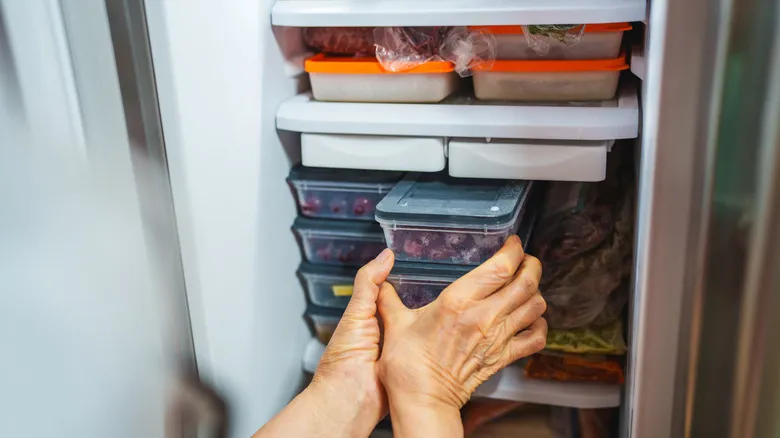
It's tempting to use any available container to freeze leftover stew or that last slice of lasagna. However, using various shapes and sizes can lead to wasted space. Opting for uniform containers specifically designed for freezer storage offers two key benefits: they stack neatly, optimizing space, and they are built to seal tightly, preventing moisture and odors from compromising your food.
Freezer-safe glass containers are a great choice, as are zip-top plastic bags labeled as freezer bags. These bags are thicker and more durable than standard resealable plastic bags, making them suitable for long-term storage. Be cautious, as some plastic containers may crack in extreme cold, which can spoil your food. Ensure your containers are freezer-safe.
Look for containers available in two or three sizes that fit well together. They should feature either tight-fitting lids that press and seal securely or have gasket seals with sturdy snapping clamps. The 24-piece JoyFul storage system set from JoyJolt is an excellent option, as are resealable plastic takeout containers, like this 50-pack from Dealusy (perfect for storing a lot of turkey and gravy). Plus, once you reorganize your freezer, you might rediscover several small bowls and containers that had gone missing!
Freeze flat, store vertical

Your usual freezing method might not be the most effective. Simply tossing bags of room-temperature fruit or meat from the store on top of a few tubs of ice cream may technically work, but this method wastes space and can complicate future use. When these items freeze, they can become uneven, lumpy, and a hassle to store.
A unique yet effective freezer tip is also one of the most affordable and straightforward. Fill resealable plastic freezer bags with berries, leftovers, or even soups and stews. Seal them tightly, then lay them flat on an empty freezer shelf or a baking sheet, allowing them to freeze overnight. You can choose quart- or gallon-sized bags based on your needs. Just ensure they are suitable for freezer storage and label each one to identify its contents and the date it was frozen.
If you have a large upright freezer, pull-out drawer, or chest freezer, consider storing the bags vertically in a plastic bin, like the Soho Collection from Bino, to maximize space. When you're ready to enjoy your leftovers, simply pull out one bag like a file folder and replace it with the next frozen meal. Keeping a running inventory of what's in your frozen storage will also be beneficial.
Repackage boxed items

Many pre-packaged frozen foods come in bulky boxes, such as waffles, ice pops, dumplings, and various snacks. A simple way to create more space in your freezer is to take these items out of their large boxes and store them individually (if they are already wrapped), in zip-top freezer bags, or in your favorite storage containers. This method is most effective for items you frequently use, rather than those meant for long-term storage, where the box provides protection against crushing and freezer burn. If you need the cooking instructions, you can cut that section from the box and place it inside the freezer bag or tape it to the outside of the storage container.
This method is also beneficial for storing meat. Cookbook author Melissa Clark advises against improperly freezing meat by leaving it in its supermarket packaging. If you put meat in the freezer directly from the store, you're not doing it any favors. The packaging, whether it's thin plastic wrap or butcher paper, is designed for short-term refrigeration. Freezing it as is can result in freezer burn, discoloration, or contamination from other foods. Instead, take the meat out of its tray and wrap each piece tightly in plastic wrap or freezer paper. Freeze them flat and neatly stacked to maximize space.
Incorporate frozen items into each meal
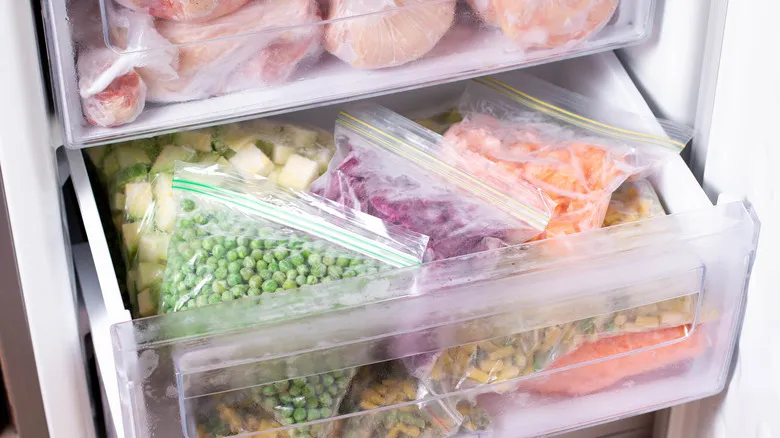
Even if you mainly use your freezer as a backup pantry for tough times or snowstorms, the food inside is meant to be enjoyed. To create more space, try to incorporate something frozen into your daily meals, especially when you anticipate a surge of new items (like during the holidays or when a favorite relative brings you homemade treats). We often overlook that the food in the freezer can be used for any meal, not just as a last-minute microwave option.
Whether it’s thawing a protein for your main course, adding frozen berries to a smoothie, or finishing off dinner with a couple of scoops of ice cream, think of this approach as resourceful rather than desperate. By regularly consuming your frozen foods, you’re making efficient use of your inventory instead of rediscovering items after they’ve gone bad, and you’re also clearing out space. Plus, it’s a great opportunity to get creative with your cooking.
If you have individual items in the freezer, now is the perfect time to use them. Toss that half-empty bag of frozen broccoli into the air fryer. Thaw a packet of chicken stock and use it for anything from cooking pasta to searing a steak like Gordon Ramsay. When preparing fresh meals, incorporating frozen ingredients like vegetables can be just as imaginative and appealing as exploring your spice cabinet. This way, you’ll also have room for holiday leftovers.
Recommended
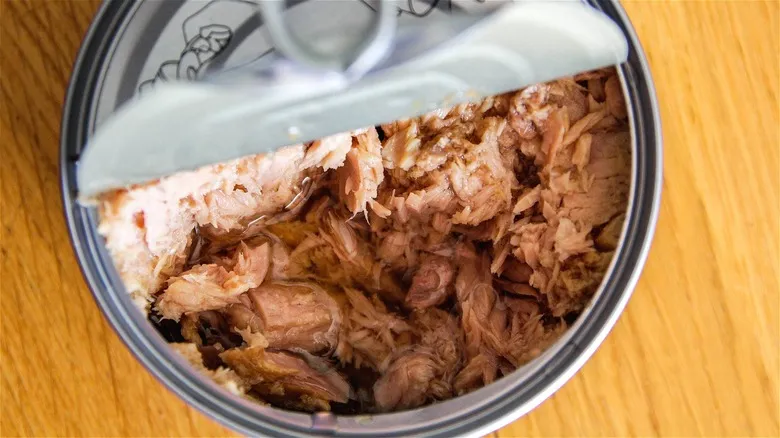
Why Your Refrigerator Is Actually The Best Place To Store Canned Tuna
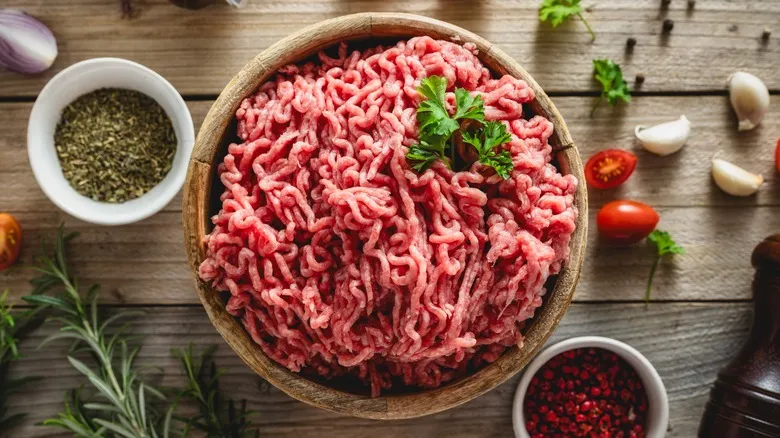
Is It Safe To Refreeze Ground Beef That's Already Been Thawed?

Should You Store Open Sriracha In The Fridge?
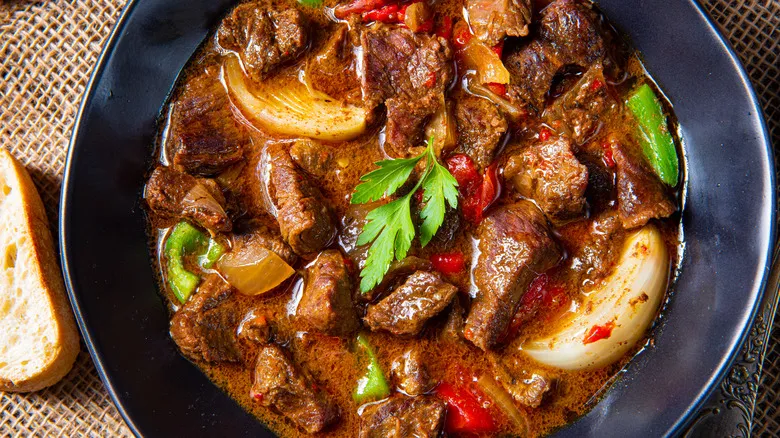
The Right Way To Freeze Beef Stew For Later
Next up

